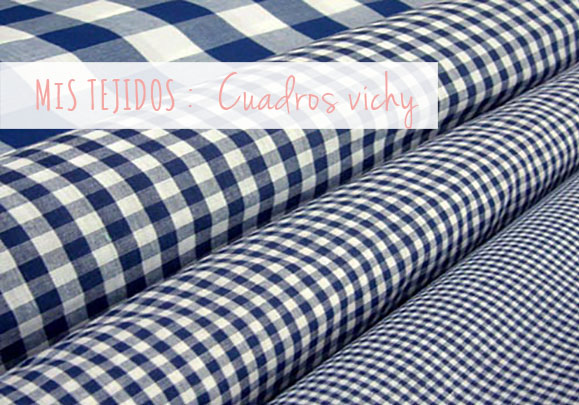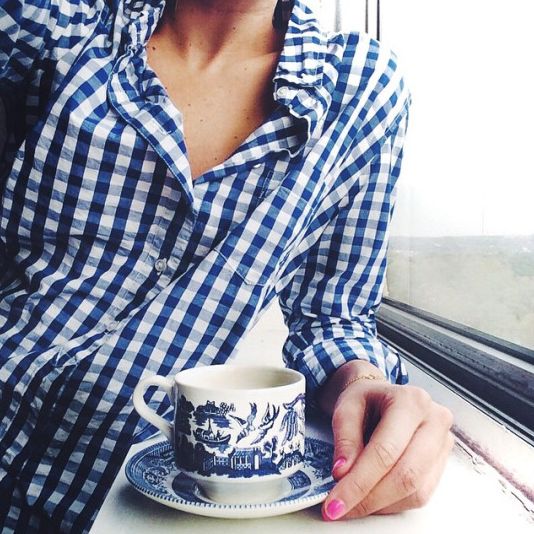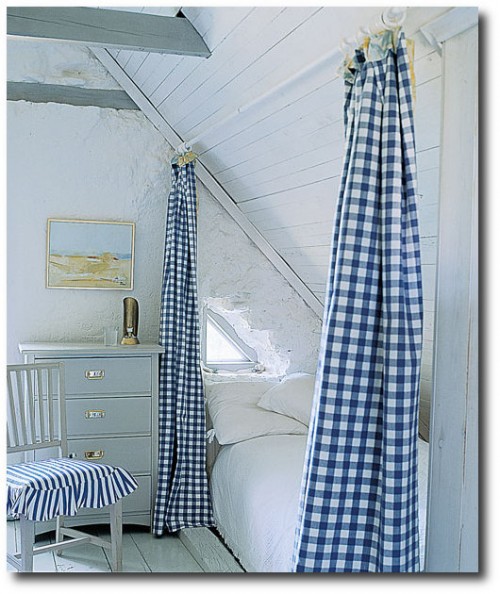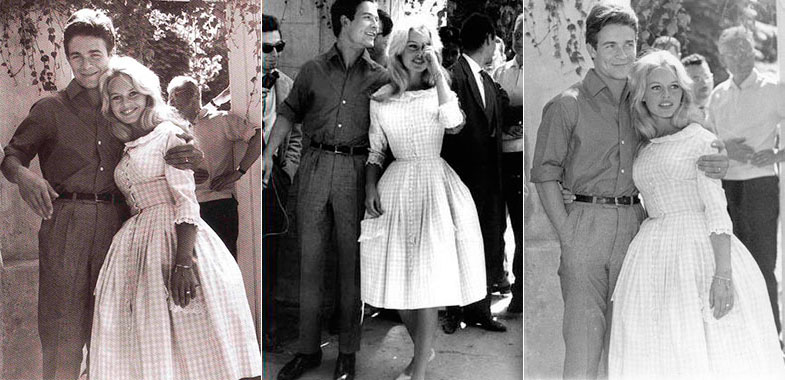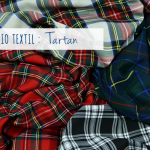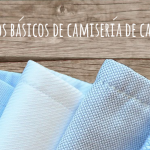En cuestión de tejidos estampados hay varios clásicos de los que no debería de dejar de hablar en mi blog. Si nos fijamos en las flores tenemos Liberty, y si hablamos de rayas, las marineras por supuesto. Os añado links para que volváis a releer aquellas publicaciones. Pero, ¿y si hablamos de cuadros? Entonces, podríamos hablar del tartán escocés, pero sin duda nos faltan los cuadros Vichy.
El vichy suele ser un tejido de algodón con cuadros regulares marcados por lineas verticales y horizontales de color sobre fondo blanco. Los más comunes son el azul y el rojo, aunque puedes encontrarlos en infinitas gamas y colores.
An English translation below if you click ” Sigue leyendo”
Su origen es muy discutido y un montón de culturas y países quieren apuntarse el tanto de su creación. El nombre que le damos en español viene de la ciudad francesa de Vichy, en dónde los franceses localizan su origen. El más probable es asiático, de Malasia o India y fue traído a Europa probablemente por los comerciantes de las colonias. De hecho, en inglés su nombre es Gingham y la palabra parece derivar de la palabra malaya “genggang” que significa rayado y que sería adaptada por los comerciantes holandeses.
Venga de donde venga, en Europa aparecen en el siglo XVII en los interiores de las casas provenzales y durante siglos en manteles, delantales y servilletas como parte o motivo de la decoración “campestre”.
Sería en los años 50 cuando en plena postguerra en tiempo de austeridad se empiezan a utilizar en prendas de vestir como vestimenta sencilla, informal o ” de campo”, pero seguramente que se pusiera de moda en los años 60 se lo debemos a una espléndida Brigitte Bardot que decide casarse en el verano de 1959 con un vestido con estampado vichy.
Así desde entonces, los cuadros vichy junto con las rayas marineras evocan verano, relajación y vacaciones. El campo o el mar, ¡tu eliges, pero cuando el verano vuelva con nosotros!
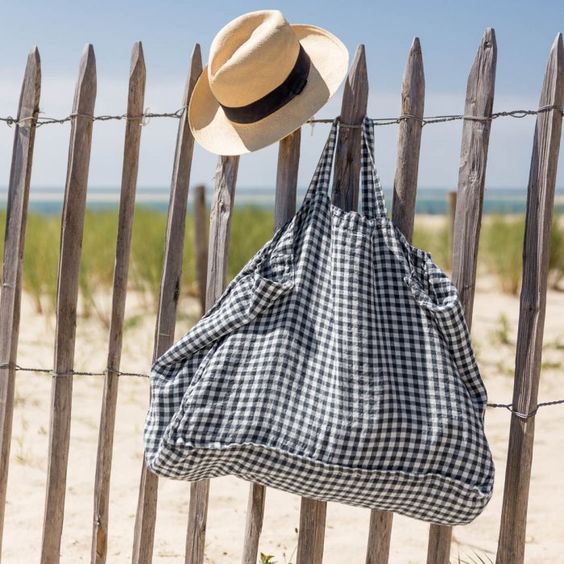
If we talk about decorated fabrics, there are several classics artworks that I should not stop talking in my blog. If you think in flowers we have Liberty, and if we talk about stripes, the French sailor ones of course. (I have added links on them so you can return to re-read those publications.) But what if we talk about checks? Then we already talked about the Scottish tartan, but certainly we lack the Gingham checks.
Gingham checks are usually a cotton fabric with regular checks marked by vertical and horizontal colored stripes on a white background. The most common are blue and red, but you can find them in endless shades and colors.
Its origin is discussed and a lot of cultures and countries want to join its creation. The name we give it in Spanish comes from the French town of Vichy, where the Frenchs locate their origin. The most probably should be Asia, Malaysia and India and they were brought to Europe by traders from the colonies. In fact, his name in English Gingham seems to derive from the Malay word “genggang” meaning striped and it would be adapted by Dutch traders.
Wherever they come, they appear in Europe in the seventeenth century in the interiors of Provencal houses and for centuries they were used on tablecloths, aprons and napkins as part of the “countryside” decor style.
It would be in the 50s when during the post-war time austerity gingham checks begin to be used in garments as simple, casual or “countryside” dressing but surely that they became fashion in the 60s, thanks to a splendid Brigitte Bardot who decides to marry in the summer of 1959 with a pretty gingham dress.
So since then, gingham and sailor stripes evoke summer, relaxation and vacation. The countryside or the sea, the choice is yours, but when summer back to us!
Imagenes:exportersindia, theswedishfurniture,thesimplyluxuriouslife,lepetitflorilege

